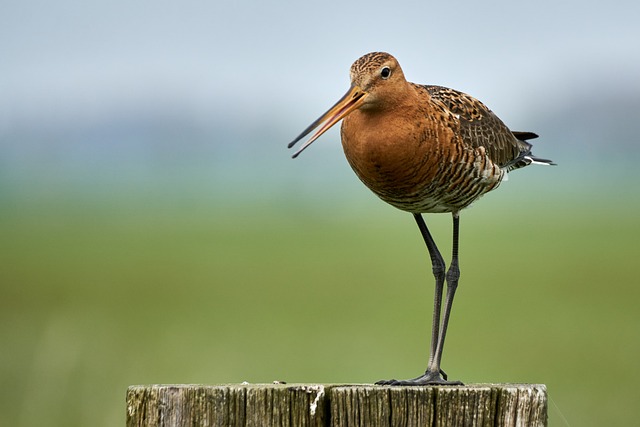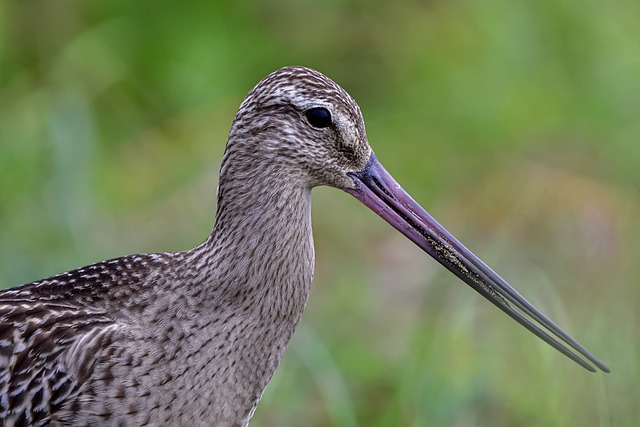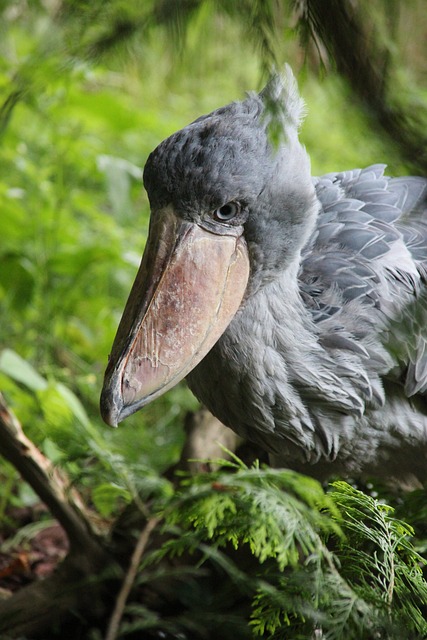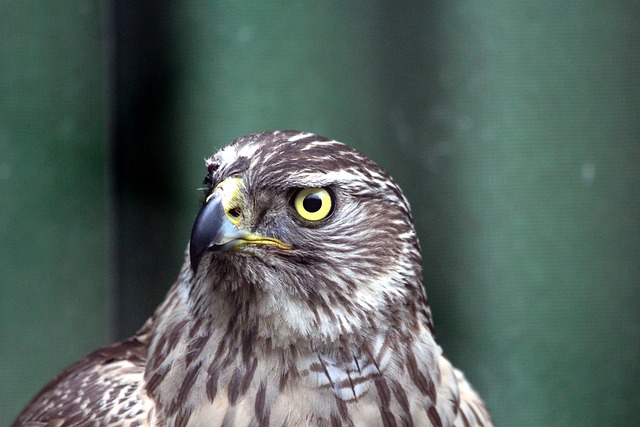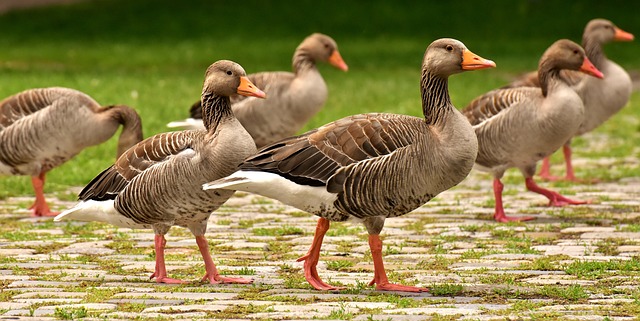The stonechat is a species of small passerine bird that is found in the open habitats throughout Europe and Asia. It is a member of the family Muscicapidae, which includes a wide variety of busy small passerine birds.
Though the stonechat is not a threatened species, it is still vulnerable to human development and loss of habitat due to agricultural practices and urbanization.
Introduction
The stonechat is easily identified by its distinctive pattern of black, white, and rusty-orange coloring. It has a black head with a white V-shaped patch on its throat, a black back, and a rusty-orange belly. Its wings are black with white wingbars, and its tail has a white tip.
Males and females are similar in plumage, though juveniles have a grayish-brown back. The stonechat typically measures 12-15 cm in length and weighs around 20-30 grams.
The stonechat is found in a variety of open habitats throughout Europe and Asia, including grasslands, scrublands, and wetlands. It prefers warm climates and is generally found in regions with mild winters, though it can be found in some colder climates. The stonechat is a migratory species, and its range extends from North Africa and the Canary Islands to India and China.
The stonechat has an unmistakable call that is described as a “tchack” sound. This call is used to communicate with other stonechats, and they also sing when they are courting. Stonechats also have a characteristic flight pattern, where they fly low and quickly, flicking their wings rapidly and often perching on short shrubs or rocks.
The stonechat has a range of interesting behaviors that make it unique among passerine birds. They have a strong bond with their partners and are often seen flying together or perching side-by-side. They also have an impressive courtship display that involves the male and female flying together and performing a ‘bowing' dance.
The stonechat is a fascinating species, and this article will provide an overview of its physical characteristics, habitat and range, behavior, breeding habits, diet, migration, and social interactions. We will also discuss the threats faced by stonechat populations and the conservation efforts being made to protect this species. With this comprehensive overview, we hope to raise awareness of the stonechat and its importance to its ecosystem.
Breeding Habits
The Stonechat is a small passerine bird, belonging to the Muscicapidae family, that is found across various parts of Europe, Asia, and North Africa. This species is known for its unique and behavior and breeding habits.
The Stonechat breeds in the warmer months, typically between April and August. They prefer to nest in shrubs and low trees, often near the ground, but will also use the peat bogs for nesting. The clutch size of the Stonechat is usually 4-5 eggs, and are generally pale blue in color with dark spots.
Nesting and egg-laying habits of the Stonechat are quite interesting. The female will prepare a nest by weaving leaves, twigs, and moss, and will line the nest with soft material. After the nest is finished, the female will lay her eggs and incubate them for around 13-14 days. Once the eggs hatch, both parents will take turns caring for the young chicks until they are old enough to leave the nest.
Courtship behavior of the Stonechat is quite unique. The male will perform a display flight, showing off his distinctive plumage. He will also sing a beautiful song to attract a female. Once the female is attracted, the male and female will form a bond and will remain together throughout the breeding season.
Parenting behavior of the Stonechat is very important for the successful rearing of the chicks. The male and female will take turns incubating the eggs and will both feed the young chicks. They will also protect the chicks from predators and will ensure their safety until the chicks are old enough to leave the nest.
The Stonechat is a fascinating species that has some unique breeding habits. From its courtship and nesting behaviors to its parenting habits, the Stonechat is a species that should be admired and protected.
Diet
The stonechat is an omnivorous bird, meaning they feed on both plants and animals. Stonechat primarily feeds on insects, such as flies, beetles, grasshoppers and crickets. They also feed on small amphibians, lizards and eggs of other birds. The stonechat also forages for seeds and berries in shrubs and trees.
When looking for food, stonechats typically forage in pairs or small groups, hopping from one branch to another. They often hunt for food on the ground, hopping and running in search of insects. They also pick berries from bushes, often in the company of other stonechats.
Stonechats usually feed in open areas such as meadows, pastureland, roadsides, and fields. They are also found in woodlands and scrublands, but are more inclined to inhabit open areas. In winter, stonechats may feed in large flocks, but in summer they are more likely to hunt alone or in pairs.
Stonechats have been observed to eat small, soft-bodied prey like caterpillars, spiders, and other arthropods. They also consume larger prey such as small rodents, frogs, and lizards. They also feed on seeds, fruits, and berries.
Stonechats are diurnal, meaning they feed during the day and are usually inactive at night. They primarily feed in the morning and evening, and take short breaks during the day.
In order to forage for food, stonechats often pick insects from foliage or stick their head into small crevices, in search of insects. They also often hang upside down to feed, a behaviour known as ‘hang-feeding’.
Stonechats have been observed to feed on the nectar of flowers. They also sometimes drink sap from trees and shrubs. They are also observed to hover and flycatch, which involves catching insects while in flight.
Stonechats often feed on the ground, but they also forage in trees, bushes, and other vegetation. They often feed in open areas, but will also inhabit woodlands and shrublands. They often exploit wet areas and meadows, as these habitats provide a rich source of insect prey.
Migration
Stonechat migration is a complex and fascinating phenomenon. The birds travel long distances to their wintering grounds and back, and there are several factors that influence their patterns of movement.
Migratory patterns of Stonechat
Stonechat migration takes place in the spring and summer months of the year. During this period, these birds migrate to their wintering grounds in the south and west of Europe and in North Africa. The Stonechat is among the earliest of migrants, usually departing its breeding grounds in late March or early April. They generally return to their breeding grounds in the late summer or early fall.
Factors that influence Stonechat migration
A number of factors determine the timing and patterns of Stonechat migration. These include the availability of food, weather patterns, and the presence of predators. For example, milder temperatures may initiate an earlier migration, while severe weather may delay migration.
Challenges faced by Stonechat during migration
Migration can be a hazardous undertaking for birds, and this is especially true for the Stonechat. During their journey, they may be exposed to harsh weather conditions, such as snow and storms. Additionally, they may be subject to predation by raptors, as well as competition with other species for food and shelter.
Adaptations for long-distance flight
The Stonechat has adapted to long distance flight by developing certain characteristics. For example, they have a larger wing span than other species of birds, allowing them to cover more ground in fewer flights. They also have the ability to store fat reserves, providing an energy boost during their journey. Additionally, they have a strong homing instinct, which enables them to return to their breeding grounds after a long journey.
Migration Benefits for Stonechat
Migration provides the Stonechat with a number of benefits, including access to new sources of food and shelter, as well as the opportunity to breed in a more favourable climate. Additionally, migration helps to disperse the species and keeps their populations healthy.
Migration is an essential part of the life cycle of the Stonechat, and it is an integral part of their survival. By understanding the challenges they face and the adaptations they have evolved to overcome them, we can better appreciate the importance of their migration.
Social Interactions
Stonechats are social birds and can be found living in pairs or small groups. As they are relatively small birds, they do not need to defend large territories from other species. Instead, they rely on aggressive behavior to keep other birds out of their territories.
In general, male Stonechats are more territorial than females. During the breeding season, males can be seen chasing away other birds, including other Stonechats, with loud calls and quick darting flights. These displays are used to protect their breeding territory and potential mates.
Stonechats may also interact with other species. They may form mixed flocks with other passerine species, such as sparrows and finches. These flocks can be highly mobile, allowing the Stonechat to take advantage of food resources in a variety of habitats.
Although Stonechats are usually solitary or found in pairs, during the winter months they may gather in larger flocks. These flocks can be quite large, with up to 50 individuals in some cases. It is believed that the birds gather in these flocks as a means of protection against predators.
In addition to defending their territories against other birds, Stonechats are also known to be quite aggressive towards members of their own species. This aggression is most often seen between males and females, as males will fight to gain access to potential mates. It is also seen between males as they compete for breeding territories and resources.
Stonechats are also known to use their aggression to defend their nesting sites from predators. In some cases, parents have been seen attacking predators, such as cats and snakes, that come too close to the nest. This behavior is believed to be an adaptation that has evolved to protect the young from predation.
Overall, Stonechats are typically solitary birds, but during certain times of the year, they can be seen in small groups or large flocks. They are also known to be quite territorial and will use aggressive behavior, such as chasing and fighting, to protect their breeding territories and potential mates. In addition to this, they are also known to use their aggression to protect their nesting sites from predators.
Conclusion
The stonechat is a unique bird species that offers us a glimpse into the wonders of nature. It has an impressive physical appearance, unique behavior patterns, and interesting social interactions. Its habitat and range are fascinating, and its migratory patterns are intriguing. Not only that, its diet and nesting and egg-laying habits are equally fascinating.
The stonechat plays an important role in its ecosystem, and unfortunately, its populations are under threat due to a variety of factors. Conservation efforts for the species are underway, but humans have the power to make a real difference in the future of these birds. By paying attention to their habitats and taking steps to reduce the threats, we can ensure that this species continues its existence in the wild for generations to come.
In conclusion, the stonechat is an incredible species that is worth protecting. With its impressive physical characteristics, interesting behavior, and important role in its ecosystem, it is a species that deserves our attention and care. By understanding more about this species, and taking steps to reduce the threats it faces, we can ensure that stonechat populations are protected and that future generations can continue to enjoy the beauty of this species.
Video


